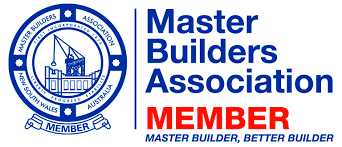 To discourage termites and improve inspection access. Fix leaking water pipes and drains. Reduce the amount of timber used in construction - especially in inaccessible areas. Improve sub-floor ventilation, drainage and access. Ensure concrete slab is properly designed, compacted, cured and easily inspected. Do not leave timber formwork behind, especially under a suspended floor construction. Have a program of regular inspections arranged with a pest controller (early spring to late summer is best - termites are most active at this time). Avoid storing potential termite food (eg. timber stacks, old stumps, building refuse) near buildings Use termite resistant timber (naturally resistant or treated - ask a timber supplier). Remove termite colonies from building vicinity. Anti-Damp can recommend specialist in pest control and can help with the ventilation improvements needed to reduce reoccurrence.
To discourage termites and improve inspection access. Fix leaking water pipes and drains. Reduce the amount of timber used in construction - especially in inaccessible areas. Improve sub-floor ventilation, drainage and access. Ensure concrete slab is properly designed, compacted, cured and easily inspected. Do not leave timber formwork behind, especially under a suspended floor construction. Have a program of regular inspections arranged with a pest controller (early spring to late summer is best - termites are most active at this time). Avoid storing potential termite food (eg. timber stacks, old stumps, building refuse) near buildings Use termite resistant timber (naturally resistant or treated - ask a timber supplier). Remove termite colonies from building vicinity. Anti-Damp can recommend specialist in pest control and can help with the ventilation improvements needed to reduce reoccurrence.
ISOPTERA - derived from the Greek "iso" meaning equal and "ptera" meaning wings, refers to the similar size, shape, and venation of the four wings Termites are often referred to as 'white ants' because of their creamy colouring and ant-like appearance.There are over 350 species of termites in Australia, of which some 20 species cause damage in timber houses. Only Tasmania is free of "economically significant" termite attacks to buildings. The species can be categorised into four main groups depending on their habits:
- Subterranean Termites This group of termites have colonies & are found either underground or in the base of trees, with tunnels (galleries) radiating from the nest through the soil to food sources. Workings between the soil and above-ground food sources are concealed in mud-like shelter tubes or galleries.
- Dampwood Termites These are only found in timber that is affected by moisture and is subject to fungal decay. This timber may be rotting branches in trees or stumps of houses that are moisture affected.
- Drywood Termites only exist in tropical or sub-tropical regions of Australia. These termites do not require contact with the ground and moisture is obtained directly from the timber. These termites do not cause as much damage as subterranean termites and colonies are much smaller in number.
- Harvester (Grass) Termites These termites eat grasses and are most common in tropical regions. They are no threat to buildings. Termites can be eradicated If termite damage is found in the home, don't panic and DO NOT DISTURB ANYTHING. Doing so prompts the termites to move elsewhere making full detection and eradication more difficult. It may also result in the damage being increased elsewhere. An expert should perform the eradication treatment, so make sure you contact only currently licensed members of your State's pest control association. These people will also set up a chemical barrier around the walls, foundations and footings, to discourage the termites from returning.
If you would like to find out more, ring Barry on 1300 301 210. Barry also offers home inspections for a fee. If you are worried about termites, rising damp, condensation or moisture damage then a home inspection can help.



